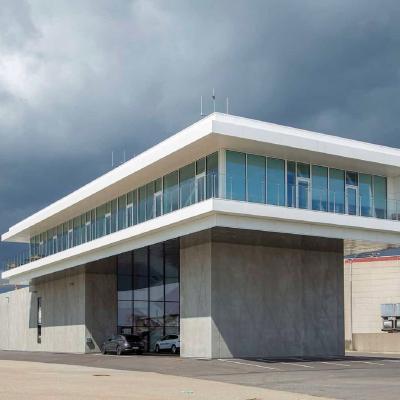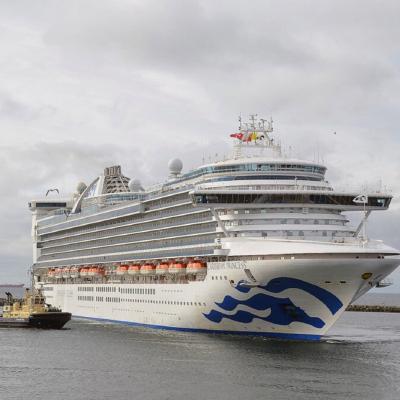Shore Side Electricity, or onshore power supply (OPS), greatly reduces noise and improves air quality levels in ports. The Port of Skagen now offers fishing vessels and cargo ships a solution where they can connect to shore power at a fixed and affordable price.
Denmark’s largest fishing port has taken this step to incentivize the use of OPS, addressing the chicken-and-egg dilemma and encouraging customers to make the switch. The low prices for shore power make it attractive to vessels calling at the port, while also saving substantial amounts of CO2 emissions.
The reduced noise levels and improved air quality also enhance the quality of life for the local community, as the port is close to residential and shopping areas. The Port of Skagen is taking responsibility for facilities that cater to both the commercial and environmental interests of its customers and the port, as well as the citizens of Skagen.
The northern basin is often occupied by fishing vessels that need power for shorter timeframes. Skagen Havn has therefore invested in a new mobile power system, which can provide capacity for 10 outlets spaced 100 meters apart on the quay. This facility is being built with support from the EU through the Interreg North Sea Region Programme project ‘REDII Ports’.
The mobile solution allows us to be very flexible, and we can move the power where the demand is. We do not require the vessels to be at a certain berth,
One shore power plant will also be located around FF Skagen and Scandic Pelagic, allowing berthed vessels to land their catches while being connected to OPS. This will enable vessels to switch off their engines during the process. The system is being built with the help of EU funds through the Interreg Baltic Sea Region Programme project ‘Blue Supply Chains’.

Port of Skagen, Mick Anderson
To complete the OPS offering, the Port of Skagen is also investing in a cable management system. This solution is being established with the help of EU funds through the Interreg North Sea Region Programme project ‘Green Supply Chains’.
This comprehensive approach allows ships to switch to OPS once they are berthed. The plant will be quite powerful, as vessels need to be connected with up to four 350-ampere cables due to the need to cool the fish until they are unloaded. The Port of Skagen has 5,500 fishing vessels and around 700 merchant vessels calling at the port each year.
This is a huge step towards greening the port, but the port’s ambitions extend further. With their goal to be CO2-neutral by 2030, significant long-term investments are needed. So far, the Port of Skagen has already invested more than DKK 26 million in the OPS project.
The port is also working on OPS for cruise ships. Around 160,000 cruise guests visit Skagen each year, bringing revenue to the city. However, the scale of these vessels is completely different. The investment needed for this would be approximately 7 million euros. The cost is a challenge when it comes to producing a business plan for the investment, and the Port of Skagen is therefore looking for funding opportunities to support this. Funding is not the only issue, as the infrastructure and capacity in the grid need to be in place too.

Port of Skagen
We need 16 megawatts, which the utility company Nord Energi Net cannot deliver at present. Discussions on how to overcome the challenges are currently taking place. This is a task we are trying to solve in collaboration with several stakeholders.
This is an urgent task, as the cruise industry is also moving swiftly ahead in the green transition to become more sustainable.
Cooperating in EU projects such as those mentioned earlier is important for the Port of Skagen. OPS for cruise ships is an immense task, which the Port of Skagen is supporting. The port plans to further invest in projects that promote the sustainable development of ports and alternative fuels. EU funding programmes are of great importance, but political support must also be behind this.
It is important to us that we have a good relationship with the local community, of which we are a part. That is why we also continuously strive to reduce our climate footprint for the port as well as our customers, which then benefits the citizens and guests in Skagen.
The Port of Skagen focuses on 7 of the 17 Sustainable Development Goals (SDGs), namely: Goal 7 – sustainable energy; Goal 9 – industry, innovation, and infrastructure; Goal 11 – sustainable cities and communities; Goal 12 – responsible consumption and production; Goal 13 – climate action; Goal 14 – life below water; and Goal 17 – partnerships for the goals.


